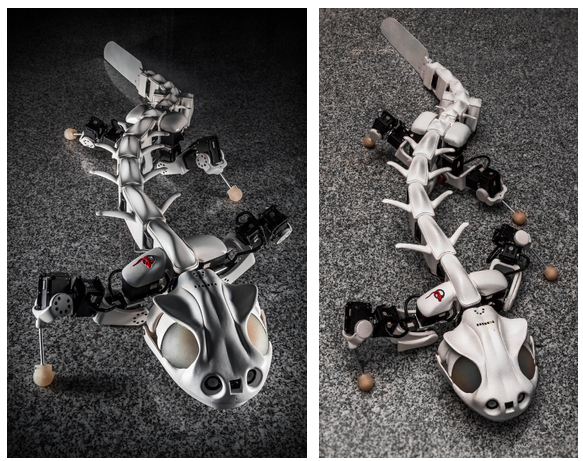Meet Pleurobot, a bio-inspired robot whose life-like movement looks exactly like that of a salamander. This is no hyperbole, you'll have to see for yourself to believe.
Constructed by ingenious team of researchers led by Professor Auke Jan Ijspeert from Switzerland's EPFL, Pleurobot's eerily accurate movements result from hours of footage recorded from three-dimensional X-ray videos of the salamanders' skeletons. The researchers tracked up to 64 points on the Pleurodeles waltl species of salamander's skeleton to obtain a highly detailed structure mapping, that permitted them to deduce the exact number and position of the active and passive joints needed to reproduce the animal's gait on a one-to-one basis.

By applying the neural patterns used by real salamander to each joint's torque control, researchers essentially activated the “virtual muscles” that would mimic the animal's movement.
So, what was the scope in all this? Professor Ijspeert writes in the press release, “our main goal is to further understand the way that the nervous system coordinates movement in vertebrates. Pleurobot's design, with 27 degrees of freedom, allows us to test more advanced mathematical models of the locomotor nervous system towards richer motor skills.” The project serves demonstrates how a bio-inspired design philosophy can yield cost effective and fast platform that “may become a physical interface for neuroscientists, biomechanists, functional morphologists, palentologists, and roboticists,” explains Ijspeert.

Pleurobot may not be the fastest roamer, but it is able to adapt its gait pattern to overcome obstacles and it's low center of gravity plus multimodal capabilities make a good starting point for multi-terrain exploration or search-and-rescue applications.
Professor Ijspeert and team's next goal is to “bring early tetrapods to 'life'” stated the professor in an interview with the National Centre of Competence in Research Robotics (in Switzerland).
Source: Biorob.epfl.ch
Advertisement
Learn more about Electronic Products Magazine





